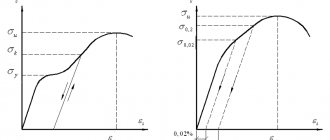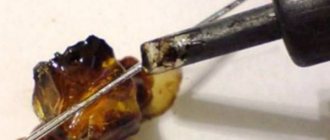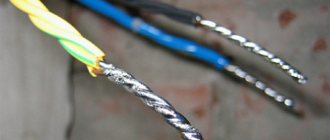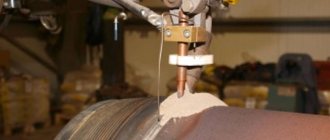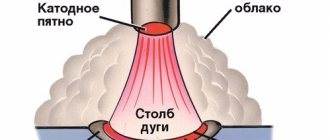When soldering, unlike welding, the surfaces being connected are not melted to mix the layers with subsequent hardening, but remain in an unchanged solid state and only the additionally added metal is melted, which connects the surfaces being connected to each other. This additive is called solder.
In order for the edges of the parts to be joined to adhere well to each other, they must be well wetted with solder. This can be achieved by using various fluxes: rosin, borax and so-called acid.
Features of rosin
Rosin is a substance consisting of resin acids and their isomers. It is obtained from the resin of coniferous trees, therefore it has a characteristic resinous odor and has an ocher, yellow, orange or red tint. The scope of application of this chemical compound is wide: light industry (production of eco-leather, plastic, rubber, paint and varnish products, etc.); food industry (additive E915); art (rubbing parts of bowed musical instruments); sports (prevention of slipping in ballet, baseball, weightlifting); electrical engineering and electronics (soldering).
soldering rosin
Rosin is optimal for soldering because:
- Provides a quick tinning process;
- guarantees the strength of the contact point;
- if necessary, it can be easily removed from surfaces;
- not exposed to moisture;
- does not enter into a chemical reaction with the surfaces to be joined;
- non-toxic.
Typically, soldering uses solid rosin, which is sold in the form of glassy bars or powder. However, some technicians prefer liquid rosin. It contains organic compounds, which make it convenient to apply the substance to small surfaces. The brush included in the bottle allows you to use this liquid precisely. Residues can be removed with alcohol or water.
It is necessary to use rosin in order to get rid of oxide films covering any metal surfaces. The abietic acid contained in rosin ensures instant dissolution of such deposits, while ensuring good spreading of the metal.
Making at home
You can make rosin yourself. The resin of all coniferous trees is suitable, but it is better to take pine. You can take a walk through the coniferous forest, taking with you a container for resin, a scraper, a spoon or a knife.
Only trees that have reached 30 cm in diameter are suitable for resin extraction. It is known that an adult pine tree produces no more than two liters of resin per year. Scientists have proven that resin is not a juice necessary for the normal functioning of a plant, but a means for healing its wounds.
A sufficient amount of resin can be obtained at logging sites, where it appears on cut trees and stumps, or it can be sent to a sawmill. Resin often appears on fresh lumber. The resin should be scraped with a scraper or spoon into a metal pot or jar.
The container filled with resin must be placed on fire. It makes sense to carry out this procedure outdoors since the resin will melt and boil when heated, releasing turpentine vapor. The contents of the pot must be stirred periodically to remove foam and debris. The resin must be heated until it stops boiling and the release of vapors stops.
After the boiling stops, a thick transparent mass of a characteristic yellow color, similar to amber, will remain in the pot. It needs to be poured into molds and allowed to cool. It is better to make forms from cardboard or stiff paper. You can also use plastic containers, but it’s easier to get ready-made rosin from cardboard containers. If inclusions of debris are visible in the resulting rosin, it can be filtered through a fine metal mesh.
Flux: what is it?
Flux is a substance that ensures strong contact between parts to be soldered. Thanks to its use, the surface of the metals being joined is cleaned, the working surfaces do not oxidize during and after soldering. This guarantees a strong bond between metal atoms and prevents corrosion. Flux and the surfaces being joined usually do not react chemically with each other (with the exception of those intended for reactive flux soldering).
liquid flux in a bottle with a brush
The following fluxes are commonly used for soldering:
- ammonia;
- borax;
- orthophosphoric acid;
- acetylsalicylic acid;
- zinc chloride, etc.
Each of them is used based on the physical and chemical characteristics of the surfaces being joined. For example, phosphoric acid should be used to join surfaces made of aluminum and stainless steel, zinc chloride is best for joining ferrous metals, borax is suitable for stainless and heat-resistant steels.
Many fluxes are a complex mixture of chemical components. Thus, the combination of potassium, zinc and lithium chloride with sodium fluoride is intended to dissolve aluminum oxides. By combining borax, boric acid and a saturated solution of zinc chloride, you can obtain a high-quality substance for soldering stainless steel.
soldering using flux
Note that in order to independently produce a multicomponent compound, you need at least some knowledge in the field of chemistry, knowledge of proportions, high-quality ingredients and personal protective equipment. Therefore, if you want to solder parts at home, it is best to purchase flux at a specialized store. Today, the range of soldering substances offered is quite wide.
The safest and most popular flux is rosin. This substance is the most common because it has a very affordable price and can be purchased on any market. Unlike other fluxes, rosin can melt at relatively low temperatures (from 52 degrees Celsius), so it is also used for soldering at home.
Borax
Borax is another flux that is used in soldering. For these purposes, it is supplied in powder form. It goes on sale packaged in jars or plastic bags.
Borax has a high melting point (about 900 degrees) and a regular soldering iron will not work in any way for its melting and subsequent application, and you can’t even think about soldering radio components using borax!
This flux is used primarily when soldering large parts made of non-ferrous metals, mainly copper pipes of heating and air conditioning systems, bronze, and steel with refractory solders using a blowtorch or gas torch.
Are there any differences between rosin and flux?
Apart from being more popular among technicians, rosin has no fundamental differences from other fluxes. Like these substances, rosin also performs a utilitarian function - it guarantees the stability of the adhesion site. It can also be used in both solid and liquid aggregate states, depending on the type of solder. There are no differences in the method of application: any auxiliary substance is applied to a previously cleaned surface; if there is excess, it is subsequently carefully removed. Another (and important) quality of all fluxes is that they are produced in accordance with GOST, so good soldering quality is guaranteed.
Is rosin a flux or a substance for another purpose? This question may concern all those who in practice are faced with the need to solder metal surfaces.
Thus, the choice between rosin or flux is a problem related more to generic concepts than to significantly different materials. Flux has many varieties - salts, acids, other chemical compounds - one of which is rosin. To decide which one is best to use for electrical work, you need to take into account the composition of the surfaces to be joined, their surface tension, degree of contamination and other physical and chemical factors.
Electronics for everyone
Fluxes During the soldering process, due to heating, the parts oxidize and the solder ceases to wet them. To prevent this from happening, fluxes are used - substances that dissolve the oxide film and promote soldering. By the way, if anyone doesn’t know, the process of coating one metal with another is called tinning. Am I saying banal things? Well, this is an educational program! Rosin
To prevent this from happening, fluxes are used - substances that dissolve the oxide film and promote soldering. By the way, if anyone doesn’t know, the process of coating one metal with another is called tinning. Am I saying banal things? Well, this is an educational program! Rosin
| Rosin - a classic of the genre |
The simplest and most popular flux. This is ordinary purified pine resin. When soldering, first take a little solder onto the tip, then poke it into the rosin to get resin onto the tip, and then quickly solder before the resin evaporates. The method is not very convenient, so they often do it differently. Take ordinary ethyl (medicinal) alcohol and dissolve crushed rosin in it until it dissolves. Afterwards, this solution is applied with a brush to the parts to be soldered and soldered. The activity of rosin is not high, so sometimes nothing works out - the details are not tinned, but rosin has one huge advantage, which sometimes overcomes all its shortcomings. Rosin is absolutely passive. That is, it does not need to be removed from the soldering site, since it does not oxidize or reduce metals, while being an excellent dielectric. This is why I try to make the most critical solderings with alcohol-rosin flux.
LTI-120
| LTI-120 |
| Glycerol-hydrazine |
| Rosin-gel. Super thing |
| F-34A - chemical weapon of mass destruction. |
Flux palette  |
One of my favorite fluxes. It is a red liquid that contains rosin and a number of additives. Solder it in the same way as regular alcohol-rosin flux - spread it on the parts with a brush and solder. But there is one trick. In the original version, LTI-120 is a liquid infection, spreads on a thin layer and dries instantly, in general it is not very convenient to use. I figured out how to overcome this. I made myself a palette of fluxes - I glued a bunch of bottle caps onto a small batch, poured different fluxes into them and glued this thing onto a coil of solder. It turned out very convenient and compact. So, after pouring LTI-120 into the cap, I let it sit for a couple of days. During this time, it will dry out and thicken to the state of liquid honey. Now it’s convenient to spread it with a sharp toothpick exactly where you need it. And if it thickens too much, then either I’ll drop a little alcohol in there, or I’ll add a little more fresh flux and stir it. The manufacturer claims that LTI-120 does not need to be washed off. In principle, this seems to be the case, he is not active. But the additives in it confuse me, so I always wash it off. It is washed off with a wide brush dipped in alcohol. Or just use a brush under running tap water. There is nothing wrong with washing the finished board with water, the main thing is to dry it well afterwards.
Rosin gel Excellent stuff. It appeared in radio stores not long ago and has already earned my love and respect. It is a thick brown paste based on rosin, sold in syringes. It spreads perfectly directly where it is needed and does not leave residue on the soldering iron, like LTI-120. Easily washed off with water or alcohol, in general, rulez!
Glycerol-hydrazine. Killer active flux, which is easily washed off with water, does not leave dirty sticky marks or oxides. But it needs to be washed off. Rinse thoroughly. Otherwise, in a couple of years it can corrode the board tracks or its remains will become conductive and terrible leaks will occur along the surface of the board between the tracks, which will have an extremely negative impact on the operation of the circuit. I'm also not sure about the safety of its vapors. You can use it once or twice, but I don’t like using it all the time. But overall, this is an awesome flux, and it’s a pleasure to solder with it.
Glycerin-Salicylic flux . He is FSGL. Honestly, I have no idea where this crap even comes from. I’ve had a jar of this flux since childhood (which is actually why I almost never soldered with rosin) - my dad stole it from a defense plant. I have never seen it on sale for free. It burns as vigorously as Glycerin-hydrazine, but does not contain any impurities that are questionable from a toxic point of view. It contains 90% glycerin, 5% salicylic acid, 5% water. Should I buy some salicylic acid at the pharmacy and apply it myself? This is such a crazy recipe. One drawback - you need to wash it off, it is active. But it washes off easily with water.
F-34A Hellish acid mixture. When soldered, it produces a terrible, caustic exhaust that poisoned half of our laboratory. You can solder this crap only in a gas mask and with a powerful hood, but this crap solders everything, something that other fluxes could never even dream of. This slurry prevents ingress - rust, oxides, steel, coatings, even aluminum can be soldered. So if you have to solder to a rusty nail, then drop this crap, hold your breath and LOOP!
Imported no-clean fluxes. To be honest, I haven't used them. They say they are cool, but IMHO it’s not rational to solder them just like that - they are too expensive, and they don’t sell them in our city, but it’s a shame for me to order them. Rather, they are for professional use, such as repairing cell phones or soldering BGA cases (this is when the legs are in the form of an array of balls under the microcircuit body). If you are interested, look for information on cell phone repair forums, they know everything about this matter.
Hemp-based Dutch flux I have no idea who makes it or where they sell it, but I know for sure that it exists! I was especially convinced of this after poking around in the product diagrams of the company where I previously worked. The developers are clearly sold on them. Since I have never seen such stoned circuit solutions.
Soldering iron in hand and go!!! I told you about fluxes, now, actually, about the soldering process. This is not a tricky thing. To begin with, it is advisable to tin the parts. You moisten them with flux, pick up a little bit of solder with the soldering iron tip and spread it over the surface. There is no need to rush; the parts should be covered with an even, thin, shiny layer. There is no need to tin the leads of microcircuits and radio components - they are already tinned at the factory.
The solder should be liquid, like water. If it is lumpy, with pronounced graininess and matte, then there are two reasons - the temperature of the soldering iron is incorrect , or the solder is low-grade crap . If the soldering iron is too cold, the solder will be on the verge of solid and liquid, will be viscous and will not wet. If the soldering iron is overheated, the solder will instantly become covered with a gray film of oxide and will also tin tin disgustingly. The ideal temperature of a soldering iron when soldering with POS-40 solder ( 60/40 Alloy ), in my opinion, is about 240-300 degrees. For ST-96, it is enough to set the regulator by 2/3 in the direction of increase.
If you solder a printed circuit board, then the tracks also need to be tinned. But this must be done carefully. Textolite that is sold in the vastness of the Motherland often also turns out to be rare shit and when heated, the foil falls off instantly. Therefore, you cannot heat the board for a long time - the tracks will fall off. Usually I just thoroughly lubricate all the tracks with LTI-120 and quickly run a flat soldering iron tip with a drop of solder along each one. As a result, I have perfectly tinned tracks with an almost mirror-like surface.
There is a popular method for quickly tinning large boards:
| Solder Removal Braid |
| My tin |
Take a braid to remove solder, this is a copper sponge, sold in rolls of 30 rubles per meter. If you don’t find it, you can pick out the braided shielding from a thick television coaxial cable - the same crap, just more fuss. The board is properly lubricated with flux, the braid is properly impregnated with solder and is also poured with flux. Then this crap is messed around with a soldering iron on the surface of the board. To prevent the braid fibers from sticking to the tracks, it is better to take a larger and more massive soldering iron.
This is how I completely improved the method. I took an old powerful 60W soldering iron, wrapped the tip in this braid, impregnated it with Rose alloy and now puddle the board in one motion. Why Rose? And it’s easier for them to tinker; when the soldering iron touches the board it cools down sharply, because... gives off heat. If the braid is moistened with ordinary solder, then it is immediately welded with separate fibers to the board, and the Rose alloy is lightweight and does not stick.
Soldering transistors, diodes and microcircuits. Here I would like to draw special attention. The fact is that semiconductors are destroyed by too high a temperature , so there is a risk of burning the microcircuit due to overheating. To prevent this from happening, it is advisable to set the soldering iron to 230 degrees or so . This is a completely tolerable temperature that the microcircuit can withstand for quite a long time. You can solder and take your time. Conventional, non-adjustable soldering irons have a tip temperature of about 350-400 degrees , so you need to solder quickly, with one touch. No longer than a second on each leg and take at least a 10-15 second break before starting to solder the other leg. You can also hold the leg with metal tweezers - it will serve as a heat sink.
Soldering wires It is better to tin the ends separately before soldering, and if the wire is soldered to a printed circuit board, then it is very advisable to drill a hole in the board, bring it in from the other side and only then solder it. In this case, the risk of tearing off the droshky when tugging on the wire is reduced to zero.
Soldering with solder wire. This is how microcircuits are usually soldered. They grab it diagonally by the outer legs, lubricate everything with flux, and then, holding a soldering iron with one hand and a thin wire of solder with the other, quickly solder all the legs.
Soldering wires in varnish insulation Any winding wire, like those that are wound around a transformer, is covered with a thin layer of varnish. To solder to it, this layer of varnish needs to be peeled off. How to do it? If the wire is thick, you can burn it a little with the fire of a lighter, the varnish will burn, and the carbon deposits can be cleaned off with rough cardboard. If the wire is thin, then either carefully scrape it with a scalpel, holding the scalpel strictly perpendicular to the wire, or take an aspirin tablet and firmly press and rub the hot tip of the soldering iron along the wire on the aspirin. When heated, the aspirin will release a substance that will eat the varnish insulation and clean the wire. It will really stink
To solder to it, this layer of varnish needs to be peeled off. How to do it? If the wire is thick, you can burn it a little with the fire of a lighter, the varnish will burn, and the carbon deposits can be cleaned off with rough cardboard. If the wire is thin, then either carefully scrape it with a scalpel, holding the scalpel strictly perpendicular to the wire, or take an aspirin tablet and firmly press and rub the hot tip of the soldering iron along the wire on the aspirin. When heated, the aspirin will release a substance that will eat the varnish insulation and clean the wire. It will really stink
Third hand
| Convenient holder. |
I recommend getting a grip like this. A damn convenient thing, it allows you to hold some Cthulhu while soldering, the ends do not dangle from side to side. By the way, beware of spring-loaded conductors! When soldering, it can jump off and throw a drop of solder in your face, I can’t remember how many times this has flown into my face, but it could have even hit my eye! So follow safety precautions!
The sponge tip of the soldering iron gradually becomes dirty and becomes covered with soot. This is normal, usually the flux is to blame, the same LTI-120 burns, God forbid. You can use a special sponge to clean the soldering iron. This yellow stuff comes with soldering iron stands. It must be moistened with water and squeezed out, leaving it damp. By the way, the sponge dries constantly, so that it doesn’t get wet every time; you can soak it in regular medical glycerin. Then it won't dry out at all! Damn convenient! If you don’t have a sponge, then take a cotton cloth, put it in an iron tray and also soak it in water or glycerin. Our installers kept an ordinary waffle towel on the table and wiped the soldering iron on it.
By the way, about safety precautions.
- First, arrange everything so that it is convenient.
- Keep an eye on power cords. The soldering iron loves to burn through its own wire . He's just manic. And this risks, at best, repairing the wire, at worst, a short circuit and fire.
- Do not leave the soldering iron turned on, even for a short time. The “ Gone - turned off ” rule must be strictly followed.
- Rule two - the soldering iron must be either in your hand or on its reliable stand . And no other way! Under no circumstances should you put it on the table or on the first thing that comes along on the table. The cord will drag him away in a moment.
- Don't forget about exhaust hood and ventilation . If you solder, then at least open the window, ventilate the room, or better yet, put a fan (at least 80mm from the computer) or an extractor hood on the table.
It's better to see once than to read a hundred times: No problem! At your service are a bunch of videos from You Tube for the request “solder”. You'll see how the professionals do it. Watch and learn!
How to treat parts with acid
Liquid fluxes are applied to surfaces with a brush. In this case, a more accurate and uniform wetting of the elements to be soldered is ensured, so the brush should be included in any soldering kit. At the same time, as already written above, both more active fluxes and less active ones, to one degree or another, have a destructive effect on both the connected surfaces and the solder. If the flux is not removed at the end of the work, then on steel parts, for example, rusting processes will occur at a much faster pace.
To prevent this, after soldering, parts coated with flux must be treated with neutralizers. The simplest of them is water. To remove F-38 N, you don’t need to use anything other than it. Soda neutralizes well the effects of hydrochloric, orthophosphoric, and acetylsalicylic acid, as it is a base. After soldering, a soda solution should be applied to the parts, which is then washed off with water. Residues of VTS are removed with alcohol or acetone.




